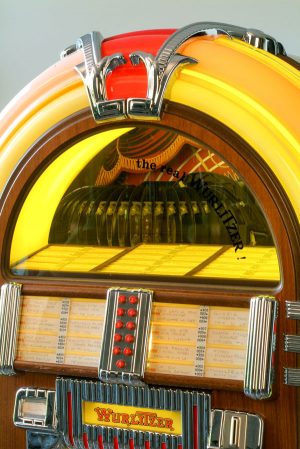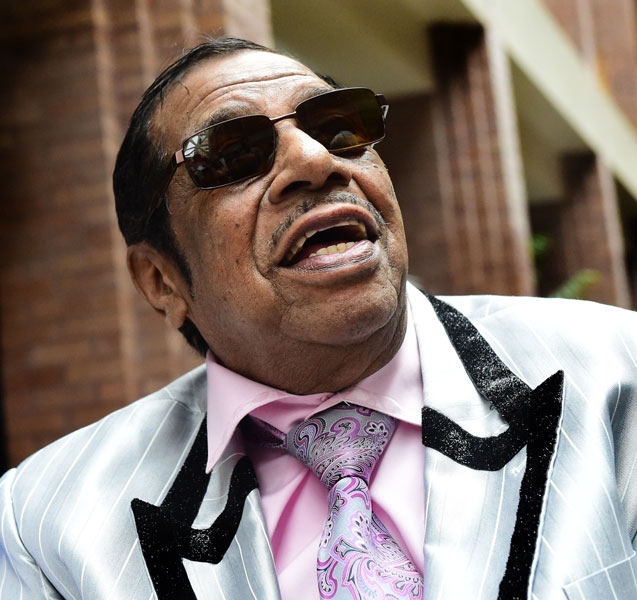On Feb. 19, 1956, the basement of St. Bernadette Church in New Haven was transformed into a makeshift recording studio to accommodate performers affiliated with Standord Records, a small local label.
The recording session was designed to capture a tune called “The Jones Girl,” which was planned as the big breakthrough song for a New Haven group billed as The Five Satins. Since “The Jones Girl” needed a second song to fill the B-side on the planned record, another number was also performed during that session.
“The Jones Girl” made no impression upon release and would be completely forgotten today had the disc jockeys of that era not turned the record over to give the afterthought B-side song a play. That tune was “In the Still of the Nite,” which is celebrated as one of the seminal achievements in the evolution of popular music.
Last December, Fred Parris, the lead singer of The Five Satins and the writer of “In the Still of the Nite,” returned to St. Bernadette’s to perform his classic work for a PBS special celebrating the best of 1950s doo-wop music. T.J. Lubinsky, the producer of the PBS special, told the New Haven Register during a break in production that “In the Still of the Nite” was “one of the first songs I heard” while listening to oldies radio growing up in New Jersey.
“This song just had a feeling, a meaning,” Lubinsky observed. “It was like magic when ‘In the Still of the Nite’ started playing.”
And, perhaps, it took a good deal of magic for the song to achieve any attention. For starters, Connecticut was on the fringe of the music industry when that fateful recording session took place.
“New Haven was not particularly a hotbed in the day,” recalls Steve Metcalf, author of the Metcalf on Music blog for WNPR.org and former music critic for the Hartford Courant. “But like a lot of urban New England cities, New Haven partook in the doo-wop phenomenon of that period.”
The doo-wop genre deviated from earlier forms of popular music in its use of chords. “Doo-wop used a certain chord progression where the I chord was followed by VI chord, followed by the IV chord, followed by V chord, then back to the I chord,” Metcalf explains.
Initially unique to the R&B charts, doo-wop songs began to cross over onto the pop charts by the mid-1950s. Parris, who fronted a previous singing group called The Scarlets, formed The Five Satins in 1954, but his budding career was interrupted when he was drafted into the U.S. Army. He wrote “In the Still of the Nite” while on guard duty at a military base in Philadelphia and recorded the song when he and Al Denby, a fellow Satin also in the military, were home on leave. Ed Martin, Jim Freeman and Nat Mosley were the other vocalists in the group.
“In the Still of the Nite” — the “Nite” spelling was meant to differentiate it from the same-titled 1937 Cole Porter composition “In the Still of the Night” — initially seemed doomed to oblivion due to Standord Records’ lack of distribution beyond the small Connecticut market. In 1957, good luck shone on the song when the much-larger New York-based Ember label acquired it and put it into national release. “In The Still Of The Nite” peaked at number three on the R&B chart and number 25 on the pop charts.
“I remember hearing it when I was 4 or 5 years old,” says Gene Seymour, a music and culture critic. “You couldn’t avoid it. That kind of vocal music was everywhere.”
But what made this song stand out? Seymour admits that “In the Still of the Nite” is not a complex or artistically provocative endeavor. “There is nothing extraordinary about the song or the singer, for that matter,” he says. “We’re not talking about Clyde McPhatter (the widely imitated R&B singer). Yet it took that one record to have an effective accessibility — an accessibility as it relates to the harmonies and other elements that make doo-wop doo-wop.”
Metcalf agrees, noting the simplicity of the recording was key to its charm. “It had a certain genuine authenticity,” he observes. “After all, it was recorded in a church basement with a non slickness, like anyone could’ve recorded it.”

Alas, Parris was not able to immediately benefit from the song’s first round of popularity. He was stationed at an Army post in Japan when the song was rising up the charts, and singer Bill Baker substituted for him in concert gigs and follow-up recording sessions until Parris’ military service was over. With Baker as the front man, The Five Satins had a follow-up hit in 1957 with “To the Aisle,” which peaked at number five on the R&B charts and at number 25 on the pop charts. When Parris returned from military service, Baker was not eager to relinquish his leadership of The Five Satins. Parris performed under Fred Parris and the Scarlets and gained control of The Five Satins name after the Baker-led group broke up.
Under Parris’ lead, The Five Satins continued recording through the 1960s for a number of labels but never latched on to another hit song. Personnel changes and even a name change to Black Satin created confusion that diminished the act’s star power. However, “In the Still of the Nite” was passed on with well-regarded cover versions from Paul Anka, The Tokens, Dion, The Beach Boys and Debbie Gibson. An a cappella arrangement by Boyz II Men reached number two on the Hot 100 Airplay in December 1992 and then charted at number 3 on the Billboard Hot 100 and the Hot 100 Singles Sales in January and February of 1993, respectively.
Nonetheless, the original Five Satins version is still considered the crowning achievement. Jane Minogue, publisher of The Daily Doo Wop online resource, attests to the song’s staying power. “During the six years I worked on The Daily Doo Wop, ‘In the Still of the Nite,’ has been the number one requested song,” she says. “People remember the song from sock hops, proms, dates, weddings and other occasions.”
As for Parris, now 82, the attention that his song continues to receive is a source of amazement. “I’m pleasantly surprised,” he said during the taping last December of the PBS production. And as he prepared for yet another performance of “In the Still of the Nite,” he jokingly noted that nothing was going to stop him from sharing the doo-wop classic with a new generation. “I’ve got my doctor with me over here, just in case,” he says, with a laugh.





